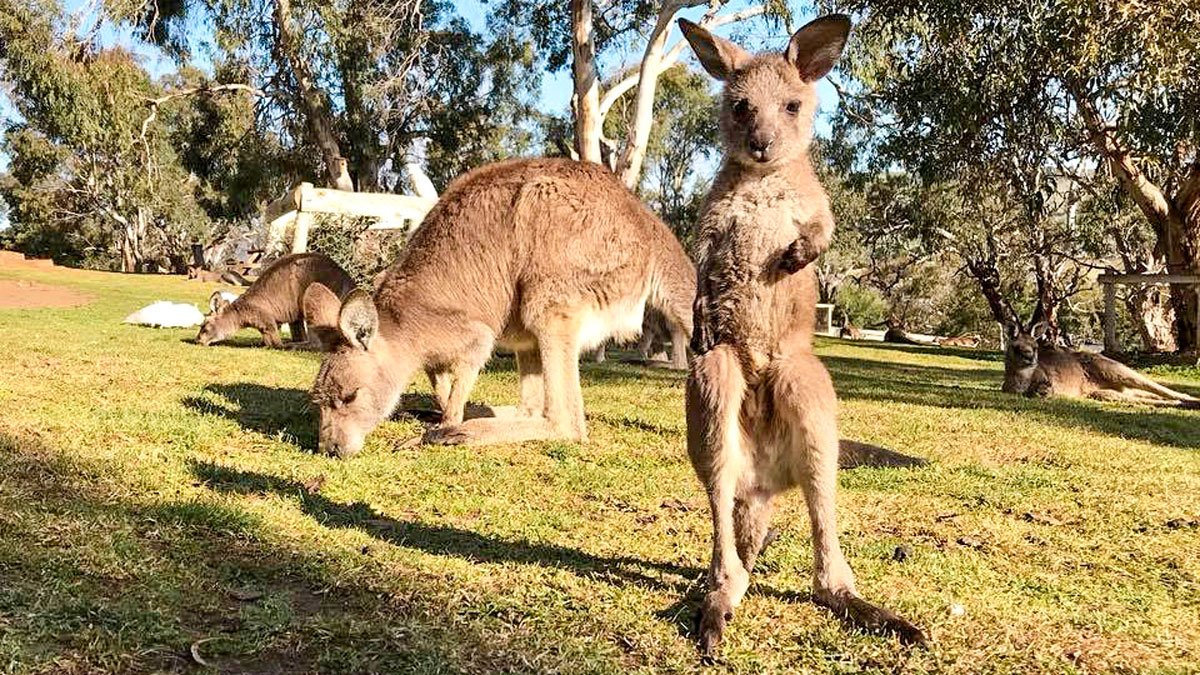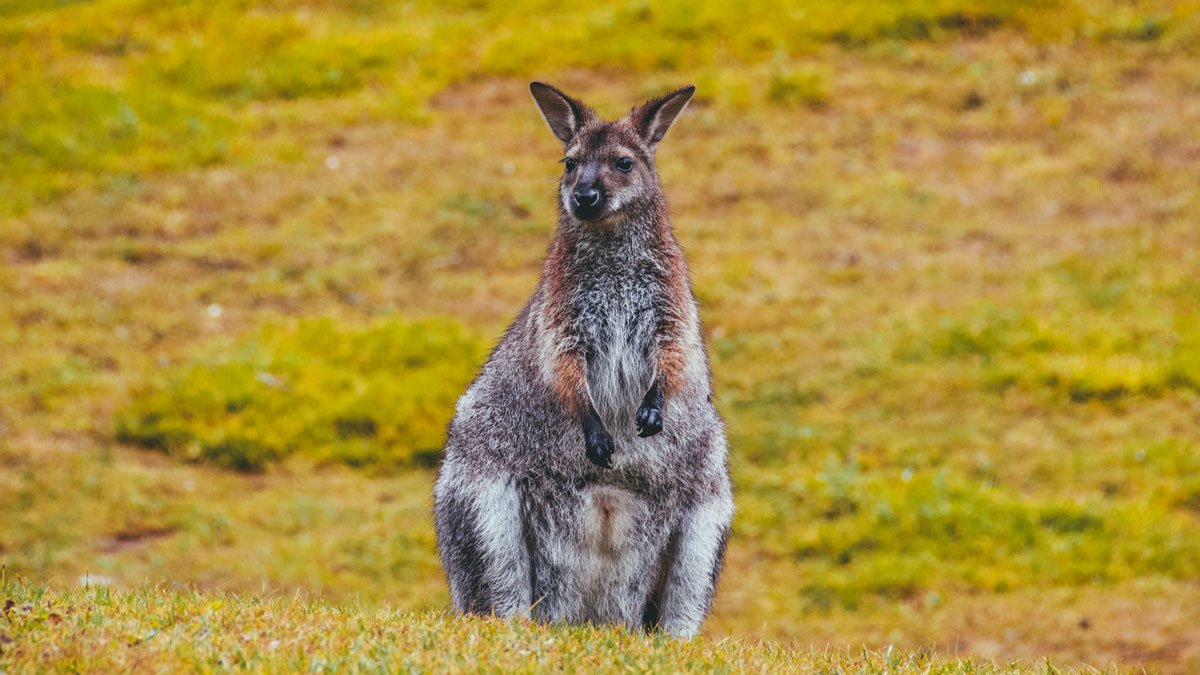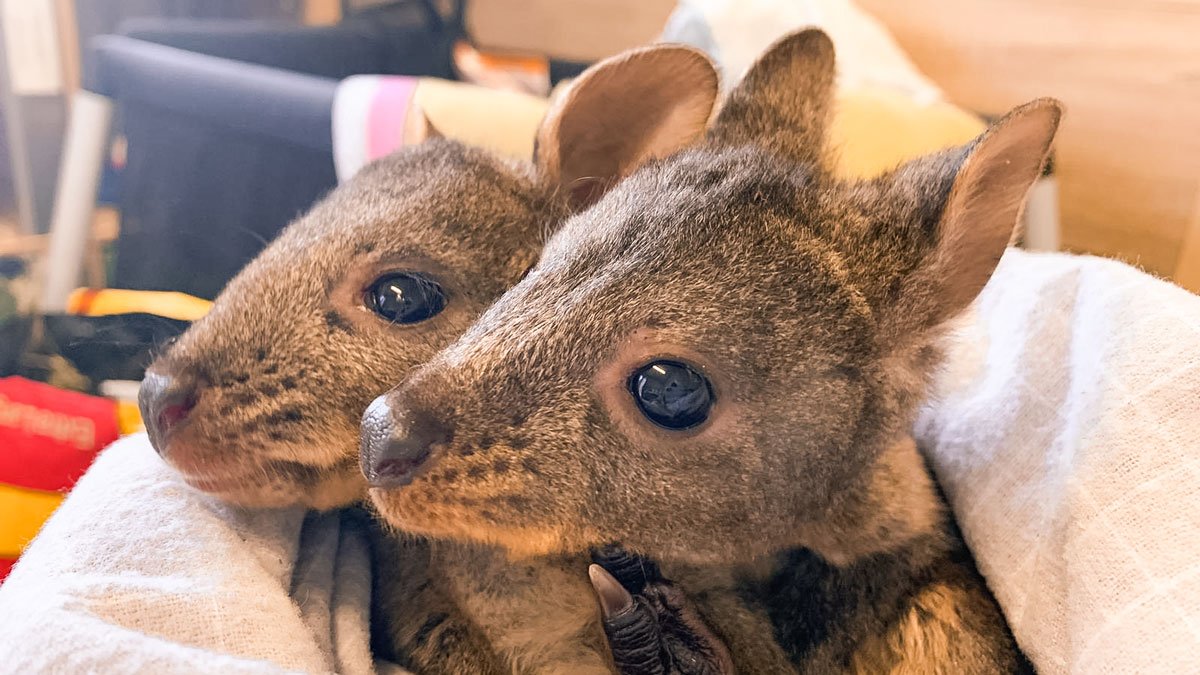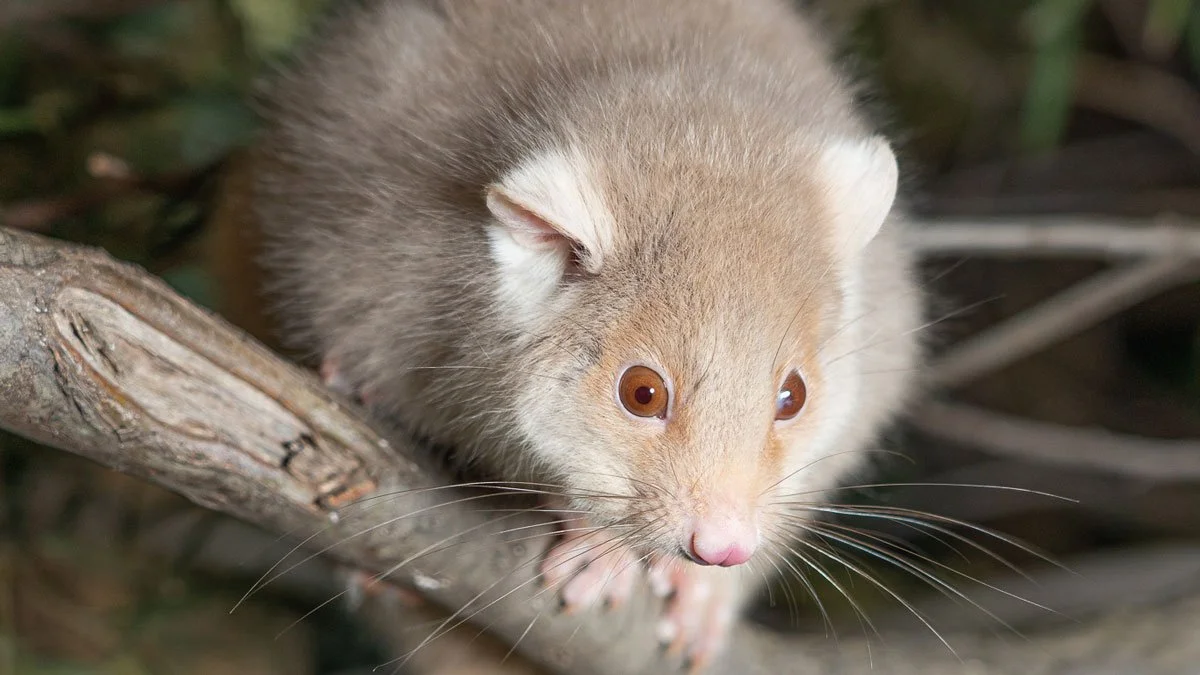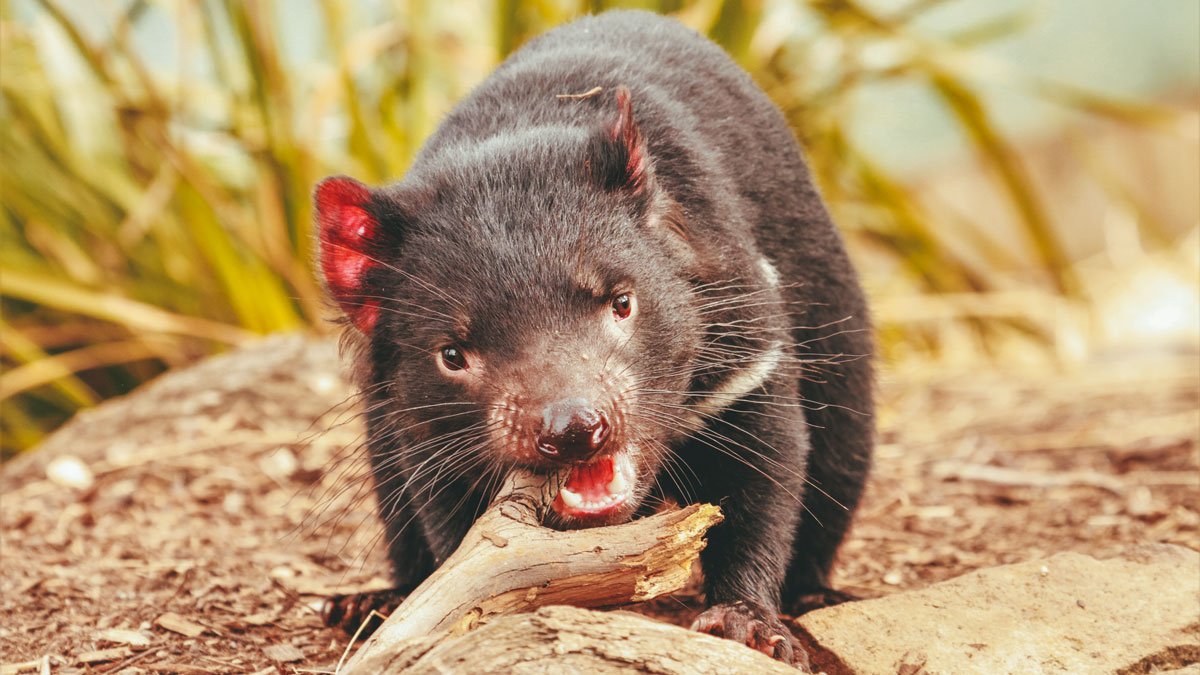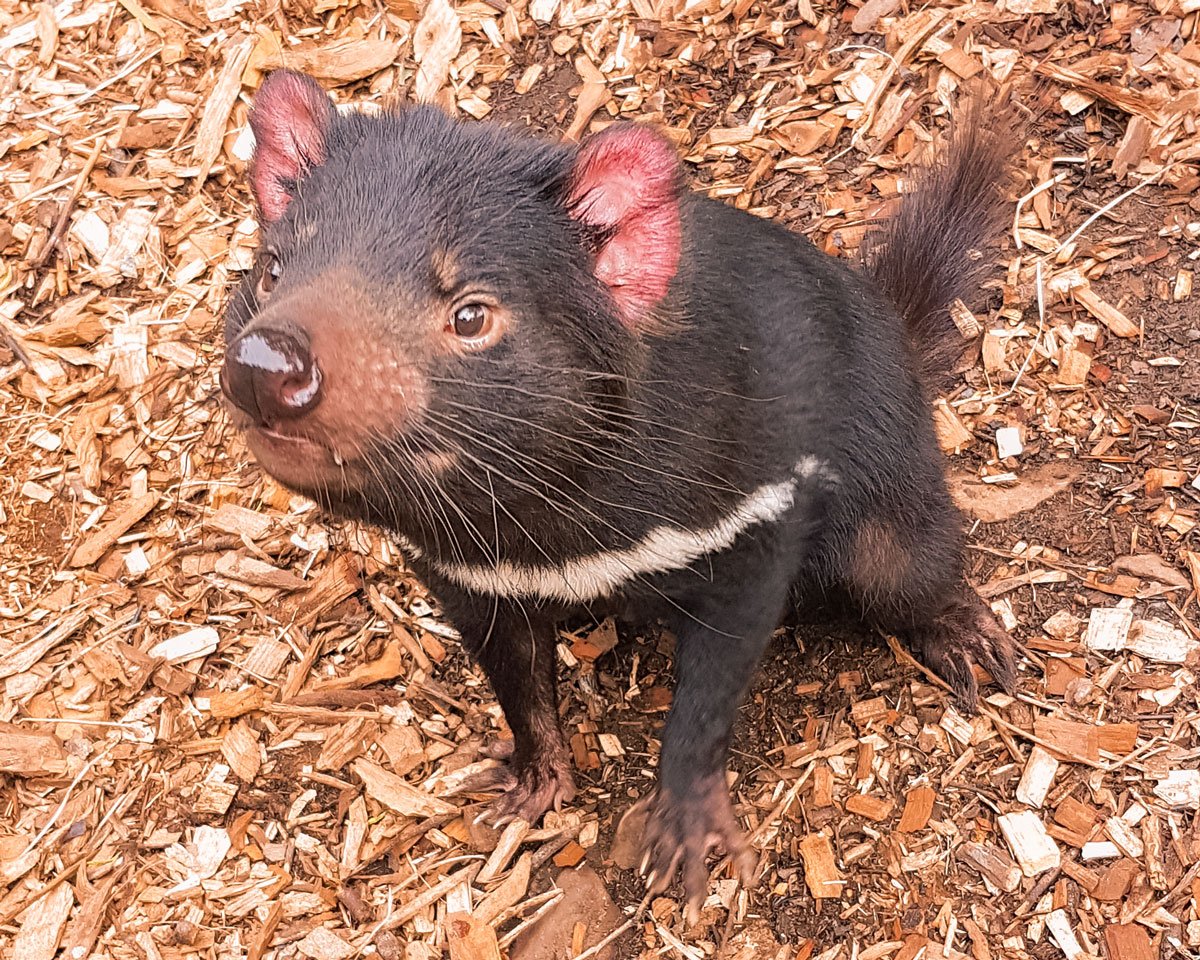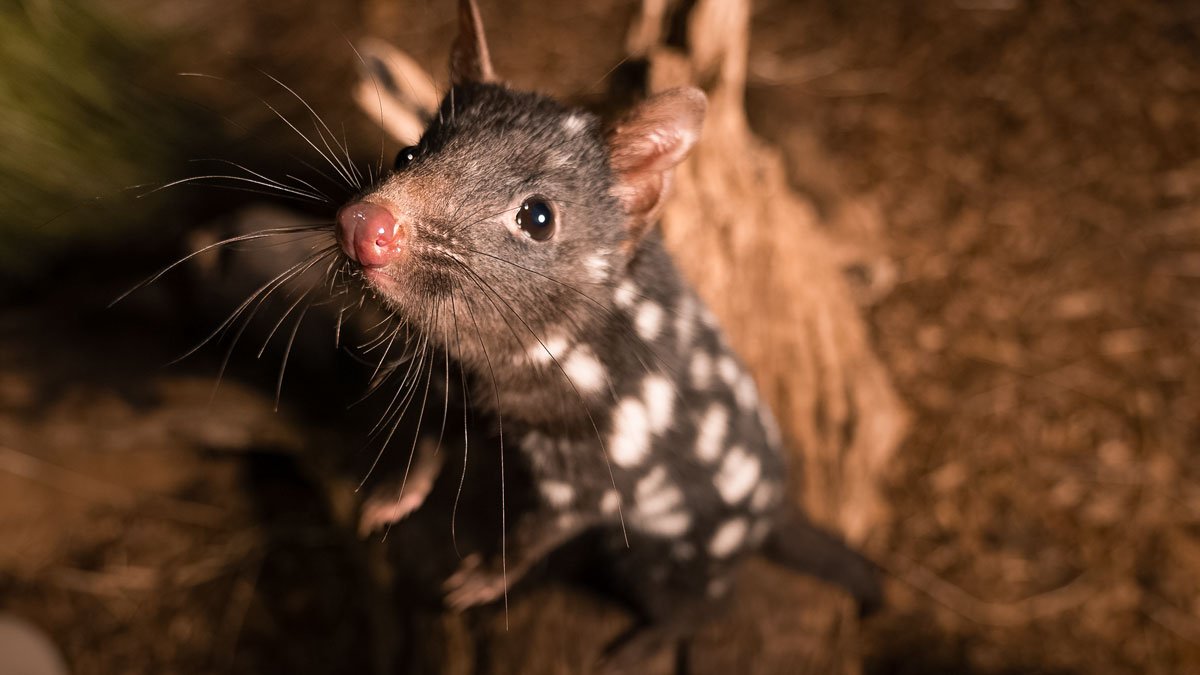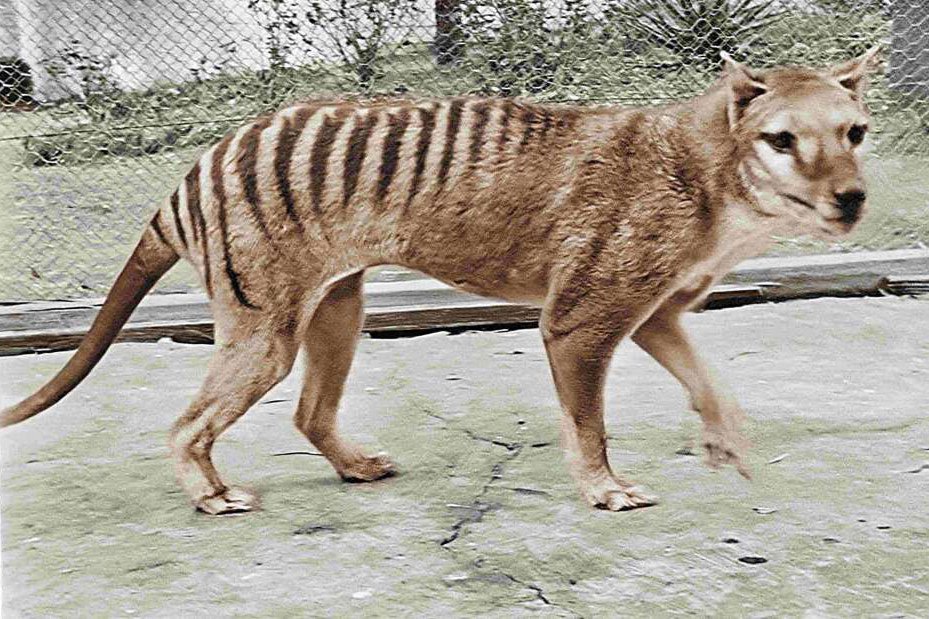Written for Bonorong by Pink Lemonade Social
Tasmania is home to a range of unique animals, including some endemic marsupials (native and restricted) not found anywhere else in Australia. This includes the Tasmanian devil, spotted-tailed quoll, and eastern quoll, the three largest living marsupial predators in the world. Due to its island position, fewer imported predators, and a comparatively large quantity of intact habitat, Tasmania is a stronghold for many species that have fallen extinct or are on the verge of extinction on the mainland of Australia. A large proportion of Tasmania's mammal population are marsupials, more commonly known as pouched mammals. Read on to discover the types of marsupials only found in Tasmania and why their conservation is important.
What is a Marsupial?
A marsupial is a mammal that has a pouch on its belly to carry its young and is found predominantly in Australia and New Guinea. This is different from placental mammals like humans, who have an abdominal cavity where the fetus develops until it is time for birth. The name "marsupial" coming from the Latin word "marsupium", means "pouch". Astonishingly, marsupials give birth to fingernail-sized babies that spend their entire lives in their mother's pouch before they are mature enough to leave the pouch and explore the world on their own feet.
What Are the Different Types of Marsupials Found in Tasmania?
Marsupials are a type of mammal that are commonly found in Tasmania that delight many locals and tourists. There are many types of marsupials in Tasmania, but the most common ones are kangaroos and wallabies, possums and Tasmanian devils.
Kangaroos and Wallabies in Tasmania (Macropods)
Kangaroos and wallabies are members of the macropod family (from the Greek meaning "large-footed"). Members of this group of marsupials are distinguished by their large hind legs and typically move by hopping. While there are over 50 macropod species found in Australia, there are five commonly found in Tasmania, including the well-known wallabies and kangaroos, as well as the lesser-known bettongs and potoroos. These include:
· Forester Kangaroo (Macropus giganteus)
· Bennetts (red-necked) Wallaby (Notamacropus rufogriseus)
· Tasmanian Pademelon (Thylogale billardierii)
· Tasmanian Bettong (Bettongia gaimardi) (also known as the Southern or Eastern Bettong)
· Long-nosed Potoroo (Potorous tridactylus)
All macropods have a pouch with four teats that opens forwards. When a new baby is born, it enters the pouch and attaches itself to a different teat; usually the one opposite the one previously suckled. Again, the mother will mate soon after the birth. As the cycle progresses, a female may be suckling a pouch young, whilst having a larger young outside the pouch suckling from a different teat, and then at the same time carrying an undeveloped embryo.
Forester Kangaroo
The Forester Kangaroo is Tasmania's largest marsupial and the world's second-largest, with males reaching 60kg and standing 2m tall! The colour ranges from pale brownish-grey to grey. They have relatively large ears and, unlike the other two species, have hair between the nostrils and on the upper lip. When alarmed, they frequently make clucking sounds between themselves and cough with a guttural sound. The species is widespread on mainland Australia, where it is known as the Eastern Grey Kangaroo. It is only found in north-eastern Tasmania and a few isolated areas in central Tasmania. They have also been introduced to the National Parks of Maria Island and Narawntapu, where open grassland clearings are their preferred habitat. You can see and feed Forester Kangaroos at Bonorong Wildlife Sanctuary and view all the animals at Bonorong here.
Bennetts Wallaby
One of Tasmania's most common native animals is the Bennetts Wallaby. The species is also common in southeast Australia, where it is known as the Red-necked Wallaby. Most of our national parks have a high probability of encountering these animals during their visit. Males stand roughly 1.5 m tall and can weigh more than 20 kg and are commonly referred to as Kangaroos in Tasmania. Their black nose and paws, as well as a white stripe on the upper lip, distinguish them from the Pademelon and Forester Kangaroos.
Some Bennett's wallabies (Macropus rufogriseus) have a rare genetic mutation that gives them white fur, and they are commonly known as white wallabies. Bruny Island is home to a population of white wallabies, some of which are albino with white coats and pink eyes, ears, and noses, while others only have a white coat (known as leucism).
While there are no wallabies at Bonorong, our Wildlife Hospital treats hundreds of wallabies every year.
Tasmanian Pademelon
Pademelon is an unusual name with Aboriginal origins. The rufous wallaby is another name for this species. The Pademelon is a stocky macropod with a short tail and legs to help it move through dense vegetation. It has a dark-brown to grey-brown upper body and a red-brown belly. Males, which are significantly larger than females, have a muscular chest and forearms and can weigh up to 12kg and measure 1-1.2m in total length, including the tail. Females weigh an average of 3.9kg. Pademelons are nocturnal and solitary creatures that spend the day in dense vegetation. The preferred habitat is rainforest and wet forest. This type of habitat is especially desirable near cleared areas where feeding can occur. After dusk, the animals migrate to open areas to feed, but they rarely venture more than 100 metres from the safety of the forest edge. The species is plentiful and widespread throughout Tasmania and is common in many of the state's national parks. On the mainland, it is extinct.
Long-Nosed Potoroo
Potoroos can weigh up to 1.3 kg and have fur that varies in colour; grey on the east coast to red-brown on the west coast, with paler fur on the belly. The majority of individuals have a white tip to their tail. The Potoroo is also distinguished by its darker colouring and a larger, more pointed nose. With populations on Flinders and Bruny Islands, the species is widespread across Tasmania. Potoroos, however, are harmed by the clearing of bush areas, as new growth forests are less suitable for their needs.
Tasmanian Bettong
The Bettong can only be found in Tasmania's eastern half. in the early twentieth century it became extinct on the mainland due to fox predation and large-scale land clearance. Bettongs can weigh up to 2 kg and are brown-grey on top and white on the bottom. The bettong's tail is as long as its head and body, whereas the potoroo's tail is significantly shorter. Bettongs prefer open, dry eucalypt forests and grassy woodlands. They are nocturnal, spending the day in a domed, grass-camouflaged nest. Using its prehensile tail, the bettong gathers suitable nesting material and transports it to the nest site. In contrast to the potoroo, which does not travel far when feeding, the bettong can travel up to 1.5 km to feed; quite a journey for an animal of this size! If you book a Bonorong Night Tour, you will get to see these cute creatures venture out for dinner.
Possums in Tasmania
Interestingly, Possums in Australia were named after their supposed resemblance to opossums in South America. In fact, apart from being arboreal (tree-dwelling) marsupials, the two groups are unrelated. Indeed, some locals still refer to these animals as opossums, and Opossum Bay, a Hobart suburb, gets its name from the misnomer. Tasmania is home to a range of possums, some commonly seen, others more elusive. While sugar gliders are considered, they were introduced into Tasmania and are not endemic to the region. You can see sugar gliders up close on one of our night tours. Possums in Tasmania include:
· Common ringtail possum (Pseudocheirus peregrinus)
· Brushtail possum (Trichosurus vulpecula)
· Eastern pygmy possum (Cercartetus nanus)
· Little pygmy possum (Cercartetus lepidus)
· Sugar glider (Petaurus breviceps) (introduced)
Brushtail Possum
The Brushtail Possum is one of Australia's most well-known marsupials, as well as the most common possum species and the largest tree-dwelling marsupial herbivore. It has the face of a domestic cat, long oval ears, a pink nose, and a bushy black tail. The Tasmanian Brushtail comes in three different colours: silver grey, black, and gold. Possums with very dark fur live in denser, wetter forests than grey Possums. Some possums that are golden in colour are the result of a genetic mutation, and most do not survive in the wild for long due to their visibility to predators. If you visit Bonorong on a night tour, you will see some wild brushtails that follow along as our animals get fed, hoping to get some fruit and vegies themselves!
Common Ringtail Possum
The common Ringtail Possum, like all Ringtail Possums, has a strong prehensile tail that acts as a fifth limb and is tightly coiled when not in use. The light fur covering its tail, as well as the white tail tip, distinguish it from the brushtail. The common ringtail can be found along the entire eastern seaboard of mainland Australia, as well as in the southwest corner of Western Australia. It is found throughout Tasmania in a variety of vegetation types, particularly eucalypt forests and areas of tall, dense tea-tree. You can meet a ringtail possum up close in one of our friendly Animal Encounters.
Little Pygmy Possum/Tasmanian pygmy possum
Adorable and appropriately named, the Little Pygmy Possum weighs only seven grams and measures only 5-6.5 cm in length. It is, in fact, the tiniest of all possums. Except for rainforest, it is mostly found in Tasmania's drier forests and heathlands in the state's east. While rarely seen, you can view a cute Little Pygmy Possum here; she was rescued by a resident calling our 24-hour wildlife rescue hotline. Our vet team performed a full health examination on her while she was sedated, and luckily, she only sustained minor injuries and was able to recover completely before being released back into the wild.
Eastern Pygmy Possum
IMAGE CREDIT: parks.tas.gov.au
Because of the harsh winters in Tasmania, both the Eastern Pygmy Possum and its close relative, the Little Pygmy Possum, have developed a few unique adaptations. During cold spells, both species go into torpor. Torpor is a state in which an animal reduces its energy expenditure by slowing its metabolism and decreasing physical activity, similar to hibernation, allowing them to survive periods of reduced food availability. Its body temperature can drop to levels comparable to those of its surroundings. Torpidity, unlike true hibernation, usually lasts only a few days. The Eastern Pygmy Possum can be found in the wetter forests of the state's western half.
Carnivorous Marsupials in Tasmania and Bandicoots
Some of the most famous animals and marsupials in Tasmania are the carnivorous kinds and are the ones most tourists are mesmerised by. While bandicoots come from the Peramelidae family, the meat-eating marsupials come from the Dasyuridae family. Tasmania’s carnivorous marsupials and bandicoots include:
· Tasmanian devil (Sarcophilus harrisii)
· Spotted-tailed quoll (Dasyurus maculatus)
· Eastern quoll (Dasyurus viverrinus)
· Tasmanian dusky antechinus (Antechinus swainsonii)
· Tasman Peninsula dusky antechinus (Antechinus vandycki)
· Swamp antechinus (Antechinus minimus)
· White-footed dunnart (Sminthopsis leucopus)
· Eastern barred bandicoot (Perameles gunnii)
· Southern brown bandicoot (Isoodon obesulus)
· Thylacine (Tasmanian tiger) (Thylacinus cynocephalus)
A visit to Bonorong will allow you to see Tasmanian Devils, Spotted-tailed quolls and Eastern quolls, or go one step closer by feeding them yourself on a Night Tour!
Tasmanian Devils
The Tasmanian Devil can’t be confused with any other marsupial or animal because they’re so unique! With their spine-chilling screeches, black colour, red ears, and rumoured bad temper, which earned it the name "The Devil" among early European settlers, they are certainly one-of-a-kind. Although Tasmanian Devils are only the size of a small dog, they can sound and look incredibly fierce but are one of the most misunderstood creatures on the planet.
Tasmanian Devils are the world's largest surviving carnivorous marsupial (the Thylacine being extinct), with a thick-set, squat build, a relatively large, broad head, and a short, thick tail. Their fur is mostly or entirely black, with white markings on the rump and chest. Body size also varies greatly depending on diet and environment. Adult male devils are typically larger than adult female devils (large males can weigh up to 12kg and stand 30 cm tall at the shoulder).
Devils once roamed mainland Australia, but they became extinct 3000 years ago, before European settlement.
Today, the Devil is regarded as a Tasmanian icon. However, this has not always been the case; once considered a nuisance by early European settlers, and they were trapped and poisoned for more than a century. They became extremely rare and appeared to be on the verge of extinction. However, the population gradually increased after they were legally protected in June 1941. They were especially common in Tasmania's northern, eastern, and central forests, woodlands, and agricultural areas. Their numbers have decreased since the discovery of Devil Facial Tumour Disease (DFTD) in 1996. DFTD, which is now wreaking havoc on the Tasmanian Devil population, was first discovered in the northeast of Tasmania but has recently spread to other parts of the state and is a fatal condition characterised by cancers around the mouth and head.
Tasmanian devils live on the ground and are primarily a scavenger, eating whatever is available. Its powerful jaws and teeth allow it to completely devour its prey, bones and fur included. By cleaning up carcasses, devils keep the bush and farmland clean. Tasmanian devils are primarily nocturnal and spend the day hiding in a den or dense bush before becoming active at night. They travel long distances (up to 16 km) along well-defined trails in search of food. The famous gape or yawn of the devil, which appears to be aggressive, is actually performed out of fear, stress (happy and unhappy stress) and uncertainty rather than aggression. When stressed, devils emit a strong odour but don’t when calm and relaxed. Their natural smell is similar to that of a wet dog. The Tasmanian Devil's status was officially upgraded to 'endangered' in May 2008 under Tasmania's Threatened Species Protection Act 1995. You can read an interesting story about A Devil Named Clownfish here.
Eastern Quoll
Eastern Quolls, also referred to by some as “native cats”, are roughly the size of a small domestic cat, measuring 60 cm in length and weighing 1.3 kg on average (females are slightly smaller). They have thick, soft fur that is fawn, brown, or black in colour. Except for their bushy tail, which may have a white tip, their body is covered in small white spots. The eastern quoll is slightly larger than the related Spotted-tail Quoll and has a pointed muzzle. It has two colour phases: fawn and black, with white spots on the body but not on the tail. Eastern quolls were once found on mainland Australia, with the last sighting in the early 1960s in the Sydney suburb of Vaucluse. They are now thought to be extinct on the mainland, but the species is thankfully widespread and locally common in Tasmania yet are still listed as endangered. Bonorong is also involved in the Tasmanian Quoll Conservation Program and we breed eastern quolls as part of this program every year. The eastern quoll is mostly nocturnal and solitary, hunting and scavenging for insects and grubs. As well as seeing them up close at Bonorong, you can see Eastern Quolls at South Bruny National Park and Mount Field National Park.
Spotted-Tail Quoll
The Spotted-tailed Quoll (also known as the Tiger Cat) is the world's second-largest surviving carnivorous marsupial. Spotted-tailed Quolls range in colour from reddish-brown to dark chocolate brown, with white spots on their bodies and tails (unlike eastern quolls, which do not have spots on the tail). Males can grow to be 130 cm long and 4 kg in weight, making them much larger than the Eastern Quoll (males are noticeably larger than females). The Spotted-tailed Quoll can also be found on the east coast of mainland Australia, but it is uncommon, unlike in Tasmania, where it thrives in cool temperate rainforest, wet sclerophyll forest, and coastal scrub along the state's north and west coasts. In Tasmania it is rare to see a Spooted-tail quoll and the species is listed as Vulnerable. Since the early 1900s, they have been extinct on King and Flinders Islands. They are mostly nocturnal and solitary, though the species does forage and bask during the day. Spotted-tailed Quolls spend one-tenth of their time moving around on logs or in trees above the forest floor. It is an expert hunter who, like the eastern quoll, kills its prey by biting on or behind the head. Rats, gliding possums, small or injured wallabies, reptiles, and insects are among the prey items taken by the spotted-tailed quoll. As well as Bonorong, you can see spotted-tail quolls at the Central Plateau Conservation Area, Narawntapu National Park and Arthur-Pieman Conservation Area.
Thylacine (Tasmanian Tiger)
Image Credit: Samuel François-Steininger/Composite Films/National Film and Sound Archive
The Thylacine is one of Australia’s and the world's most legendary animals. Despite its fame, it is one of Tasmania's least understood native animals. It perplexed European settlers, who feared it and killed it whenever they could. The animal was on the verge of extinction after only a century of white settlement. The Thylacine had the appearance of a large, long dog with stripes, a heavy stiff tail, and a large head. The scientific name, Thylacinus cynocephalus, means a pouched dog with a wolf's head. The short, soft fur was brown with 13 - 20 dark brown-black stripes running from the base of the tail to almost the shoulders. Thylacines were usually silent, but when they were nervous or excited, they let out a series of husky, coughing barks. When they were hunting, they made a distinctive terrier-like double yap that was repeated every few seconds. You can see and learn more about Tasmanian Devils at the Tasmanian Museum and Art Gallery.
Eastern Barred Bandicoot
The endearing Eastern-barred Bandicoot is a small (640 g) marsupial with a slender, elongated head that tapers to a pink nose and a well-whiskered muzzle. It has big, protruding ears. Its soft fur is greyish brown, with the characteristic pale bars or stripes across the hindquarters that distinguish it from the brown bandicoot, which lacks such stripes. They have a short, thin tail with white fur on the belly. The Eastern-barred Bandicoot is classified as threatened because the species is on the verge of extinction. In South Australia, the eastern barred bandicoot has been declared extinct and 'critically endangered' in Victoria, where the population has been reduced to 200 individuals.
Wombats in Tasmania
The Wombat is the largest burrowing mammal, and interestingly, the Koala is its closest relative. The wombat is one of Australia's most endearing native animals, with its short tail and legs, characteristic waddle, and 'cuddly' appearance. Once found throughout southeastern Australia, the Bare-nosed wombat, also known as the common wombat is now restricted further south, owing in part to European settlement. It is found in Tasmania, eastern New South Wales, and eastern Victoria, with isolated populations in southeastern South Australia and southwest Victoria. It is a large, well-built animal with a squat, round, bear-like body, small ears and eyes, and a large naked nose. Its thick, coarse fur ranges in colour from sandy brown to grey and black, with flecks of fawn thrown in for good measure. Although not as large or bulky as those found on the mainland, the Tasmanian Wombat measure 85 cm in length and weighs 20 kg on average, with the Flinders Island Wombat even smaller, measuring only 75 cm in length. Wombats are common in Tasmania but can be more often seen in southern Tasmania, the Tasman Peninsula, Cradle Mountain or up close at Bonorong in a regular visit or via our Wombat Animal Encounter, our Feeding Frenzy Tour or our Night Tour. If you love wombats, read our guide to Everything You Need to Know about Wombats.
Why are Tasmanian marsupials important?
Tasmanian marsupials are an important part of the Australian ecosystem. They are threatened and endangered due to a variety of factors, including climate change, habitat destruction, predation by invasive species and human interference.
The Tasmanian devil is the most well-known marsupial in Australia. It is one of the largest carnivores in the country, and it plays an important role in keeping other populations of animals under control.
Marsupials are some of the most common, endangered and cherished animals in Tasmania, and if you find injured or orphaned marsupials or wildlife, remember to call the Bonorong Wildlife Rescue Service, which operates 24/7 on 0447 264 625.


